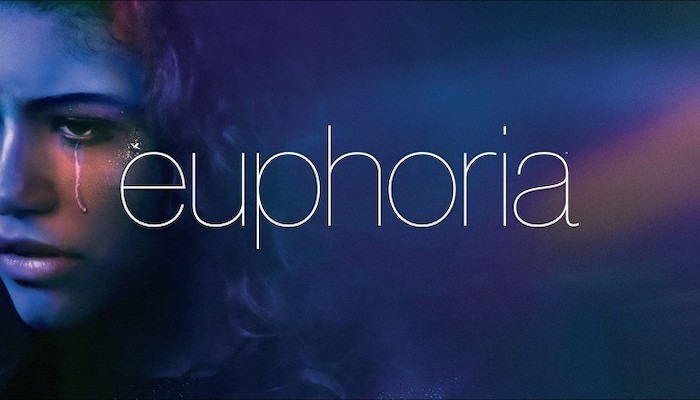With its glittery eyeshadow, dreamlike editing and shocking drama, HBO’s “Euphoria” is sweeping the nation. Since the second season began in January, discussion of the show has taken over the internet as people around the world tune in for weekly installments.
“Euphoria” stars Zendaya and an ensemble cast featuring rising stars like Hunter Schafer, Jacob Elordi and Alexa Demie. The show has gained both acclaim and notoriety for its gritty portrayals of topics like drug addiction, sexuality and mental illness in a high school setting.
Here at the University of Arizona, some students provided their opinions on the wildly popular show.
“It is different than anything I’ve ever watched,” said Jenan Meri, a sophomore studying computer science. “I think the camerawork is really good, the aesthetics are really on point.”
Many students said that they enjoyed the show’s cinematography, characters and willingness to depict unique issues. When asked about the show’s popularity, sophomore Isabella Espinoza had several positive observations.
“Mostly Zendaya, probably, is what makes it popular,” Espinoza said. “There’s a lot of shows that have tackled kind of the same ideas … but to see it all done at once in this chaotic kind of way is super interesting.”
“Euphoria” deals with heavy topics and public opinion seems to be divided on whether it’s an accurate depiction of modern high school life. One trend on TikTok, for instance, mocks the revealing outfits characters wear, pointing out that most young people wouldn’t be able to dress and act like “Euphoria” characters on a regular basis.
“I could see it happening but it’s not supposed to be real, like it’s so dramatic,” Meri said of the show’s plot.
Other students feel that “Euphoria” isn’t far off from the behaviors exhibited by some at their high schools.
“It really appeals to teens because it has a lot of topics that we can all relate to,” said film and television major Sydney Shear. However, when asked about the show’s accuracy, she added, “I think it’s a little bit extreme.”
Tariq Wilson, a sophomore, said that students at his high school dealt with similar issues as shown in the series, like cheating, fights and drug use.
“The relationships are also relatable,” Wilson said.
In terms of how accurately the show illustrates what high school students go through, Espinoza said, “I think that depends where you’re from.”
In many ways, “Euphoria” is uniquely graphic. The show doesn’t shy away from sexually explicit scenes or detailed looks at the medical effects of drug use. Zendaya herself posted a content warning on her Twitter account before the premiere of the second season.
“It’s definitely not appropriate for younger kids,” Shear said, mentioning that she wouldn’t want her 13-year-old sister to watch it. “I think it has a lot of sexual content and really extreme subjects.”
But Espinoza doesn’t see “Euphoria” as particularly harmful because the target audience is high school and college students. “People at that age have already been exposed to most of the content of the show,” she said.
Season two in particular has included graphic depictions of substance abuse and withdrawal.
“The first season was definitely more on the aesthetic side,” Meri said, but pointed out that the second season shows more of the dark realities of drug abuse.
“This show really shows the consequences of different people’s actions and addiction,” Isabela Gamez, a sophomore studying journalism, said.
According to UA Communication professor Jennifer Stevens Aubrey, it’s important that media portrayals of topics like substance abuse and reckless sexual activity frequently include negative consequences, especially because “Euphoria” tends to walk the line between glamorizing these behaviors and showing how harmful they can be.
When asked if the show could be harmful to young audiences, Aubrey said, “It really depends on the nature of the depiction.”
Aubrey discussed the issue from the lens of social learning theory, which, in her words, is “the idea that we learn behaviors from observing the behaviors of others.” She continued, “An important part of that is whether we believe those behaviors are a good idea or not.”
When discussing concerns about the show, Aubrey notes that it’s important to consider whether the show illustrates dangerous actions as resulting in positive effects. To prevent advertising these behaviors, she said, “the consequences need to be persistent and consistently negative.”
Follow Erika Howlett on Twitter









